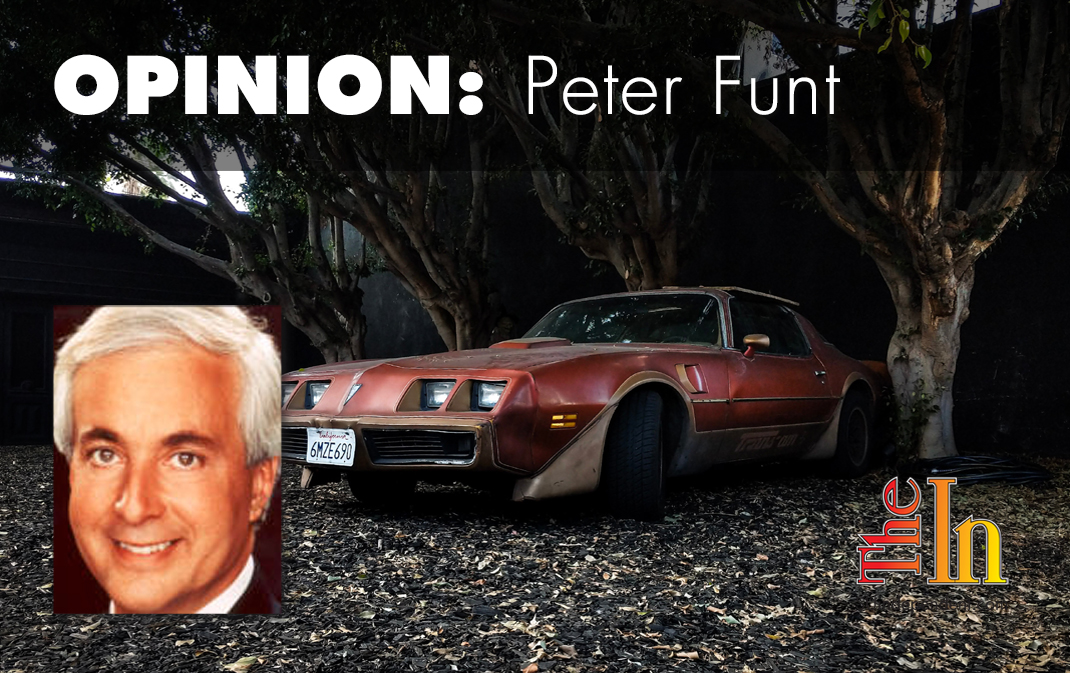
For whom the horn honks
During the years I lived in Manhattan, I got used to sleeping through screeching sirens, revving engines, and even, sadly, the occasional cry for help. Here in Central California, things are so quiet that a falling pine cone can be jarring.
Which brings me to the other night, just after 2 a.m., when I twisted and turned for 20 painful minutes, wondering why someone in the neighborhood would be blowing a car horn nonstop.
With my wife fretting and our Shih Tzu yapping, I stepped outside to investigate. In the driveway, where it has been parked during recent storms, my son’s 1998 Pontiac Grand Am hardtop was honking at a volume that would have been annoying in mid-afternoon but in the dead of night was positively deafening.
Danny was in New York, having left his car in my care. When I unlocked it and got in, my feet plunged into several inches of water.
The engine wouldn’t start — no surprise there. Yet the horn blared on, seemingly louder than before, which was confounding.
For some reason, my mind ran to semantics. If I were to phone Triple A, would I say that my car’s horn was stuck because the vehicle was “leaking”? That didn’t seem right. When a car leaks oil, for example, the stuff spills out. When a pipe under your sink leaks, water drips onto the floor. But does the word “leak” apply when water collects inside a car?
If not leak, then what? “My car is absorbing water?” “Retaining water?” I was paralyzed by a loss for words.
In my delirium, I puzzled over what to call the thing you push to blow the horn. It’s not a button or switch. What is that soft area in the center of the steering wheel? The honker? Could this be the only part of a car without a name?
After determining that I had neither the knowledge nor the nerve to fiddle with wet wires under the hood, I decided the only course was to drain the battery — hopefully before the police showed up.
I turned on the headlights, the defroster, the windshield wipers, and the radio, which happened to be playing “Lady Marmalade,” the 1974 tune by Patti LaBelle. My mind ran to volume. Would the battery drain faster if the volume were turned way up?
I had wiper blades scraping, cold air pouring from the defroster, incessant honking, and “Voulez-vous coucher avec moi, ce soir?” at max volume.
After 15 more minutes, which seemed like 115, everything stopped.
Back inside, my wife Amy, who is quite the night owl, was watching the soggy 1997 film “Titanic,” in which Leonardo DiCaprio and Kate Winslet would have happily settled for a transportation problem as mundane as a stuck horn. I imagined Jack Dawson telling Danny’s car not to give up, “no matter what happens, no matter how hopeless.”
To my surprise, three plaintive toots — more like whimpers than full blown honks — came from the driveway. But before I could reach the door, the Grand Am fell silent.
The viewpoints expressed above are those of the author and do not necessarily reflect those of The Independent.
How to submit an article, guest opinion piece, or letter to the editor to The Independent
Do you have something to say? Want your voice to be heard by thousands of readers? Send The Independent your letter to the editor or guest opinion piece. All submissions will be considered for publication by our editorial staff. If your letter or editorial is accepted, it will run on suindependent.com, and we’ll promote it through all of our social media channels. We may even decide to include it in our monthly print edition. Just follow our simple submission guidelines and make your voice heard:
—Submissions should be between 300 and 1,500 words.
—Submissions must be sent to editor@infowest.com as a .doc, .docx, .txt, or .rtf file.
—The subject line of the email containing your submission should read “Letter to the editor.”
—Attach your name to both the email and the document file (we don’t run anonymous letters).
—If you have a photo or image you’d like us to use and it’s in .jpg format, at least 1200 X 754 pixels large, and your intellectual property (you own the copyright), feel free to attach it as well, though we reserve the right to choose a different image.
—If you are on Twitter and would like a shout-out when your piece or letter is published, include that in your correspondence and we’ll give you a mention at the time of publication.
Articles related to “For whom the horn honks”
We did it! Utahns are no longer officially the worst drivers in America (barely)



